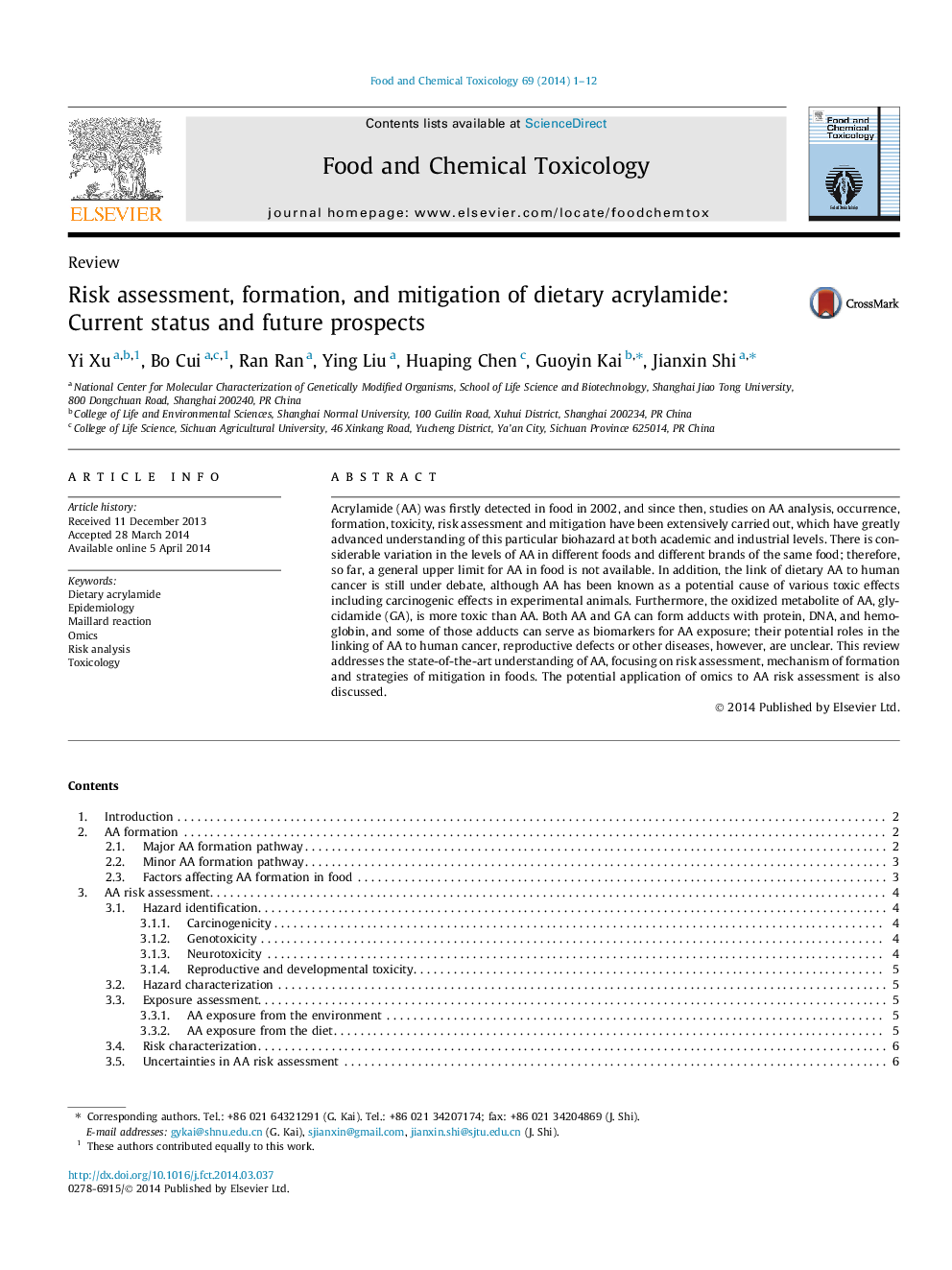| Article ID | Journal | Published Year | Pages | File Type |
|---|---|---|---|---|
| 5850231 | Food and Chemical Toxicology | 2014 | 12 Pages |
Abstract
Acrylamide (AA) was firstly detected in food in 2002, and since then, studies on AA analysis, occurrence, formation, toxicity, risk assessment and mitigation have been extensively carried out, which have greatly advanced understanding of this particular biohazard at both academic and industrial levels. There is considerable variation in the levels of AA in different foods and different brands of the same food; therefore, so far, a general upper limit for AA in food is not available. In addition, the link of dietary AA to human cancer is still under debate, although AA has been known as a potential cause of various toxic effects including carcinogenic effects in experimental animals. Furthermore, the oxidized metabolite of AA, glycidamide (GA), is more toxic than AA. Both AA and GA can form adducts with protein, DNA, and hemoglobin, and some of those adducts can serve as biomarkers for AA exposure; their potential roles in the linking of AA to human cancer, reproductive defects or other diseases, however, are unclear. This review addresses the state-of-the-art understanding of AA, focusing on risk assessment, mechanism of formation and strategies of mitigation in foods. The potential application of omics to AA risk assessment is also discussed.
Related Topics
Life Sciences
Agricultural and Biological Sciences
Food Science
Authors
Yi Xu, Bo Cui, Ran Ran, Ying Liu, Huaping Chen, Guoyin Kai, Jianxin Shi,
